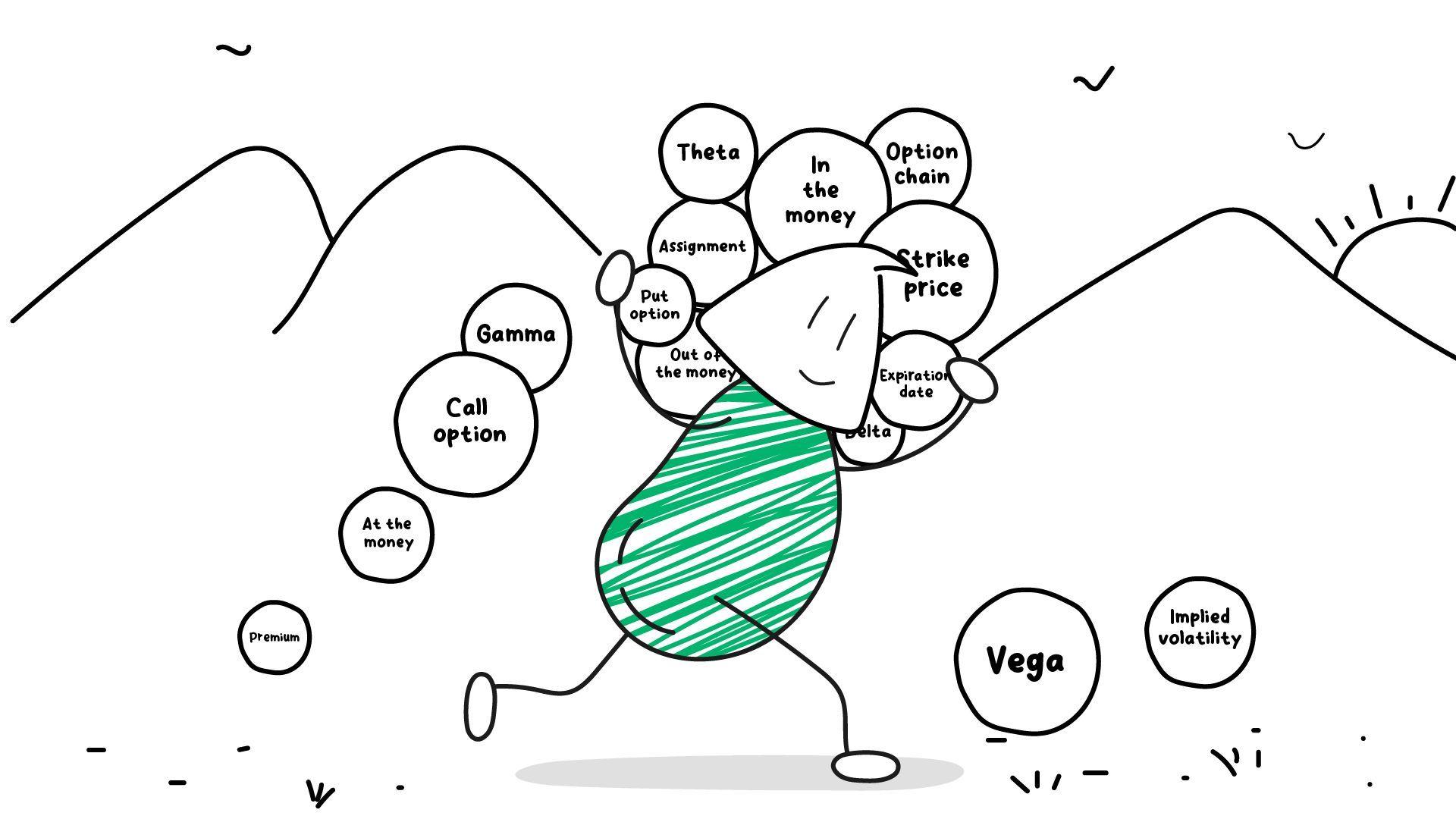Basic Options Jargons: Must know terms for beginners

Options trading can be a complex and technical field, with many specialized terms and jargon. Here are some of the key terms and jargon you should know:
Call option: An options contract that gives the holder the right, but not the obligation, to buy an underlying asset at a specified price within a specific time period. Understanding call options are important because they are a common way for investors to profit from an anticipated increase in the price of an underlying asset. For example, if an investor believes that the price of a particular stock is going to go up, they can buy a call option on that stock, giving them the right to buy it at a specified price. If the stock's price does go up, the investor can exercise the option, of buying the stock at the lower strike price and selling it at the higher market price, making a profit. However, if the stock's price does not go up, the investor may not exercise the option and will lose the premium they paid for the option.
Put option: An options contract that gives the holder the right, but not the obligation, to sell an underlying asset at a specified price within a specific time period. Understanding put options is important because they are a common way for investors to profit from an anticipated decrease in the price of an underlying asset. For example, if an investor believes that the price of a particular stock is going to go down, they can buy a put option on that stock, giving them the right to sell it at a specified price. If the stock's price does go down, the investor can exercise the option, of selling the stock at the higher strike price and buying it back at the lower market price, making a profit. However, if the stock's price does not go down, the investor may not exercise the option and will lose the premium they paid for the option.
Strike price: The price at which an options contract can be exercised. It is also known as the exercise price or the execution price. Understanding the strike price is important because it determines the price at which an investor can buy or sell an underlying asset, as well as the potential profit or loss on the option. For example, if an investor buys a call option with a strike price of $50, and the market price of the underlying asset is $60 at expiration, the investor can exercise the option, buying the asset at the lower $50 strike price and selling it at the higher $60 market price, making a $10 profit per share. However, if the market price is below the strike price at expiration, the investor may choose not to exercise the option and will lose the premium they paid for the option.
Expiration date: The date on which an options contract expires, after which it is no longer valid. Understanding the expiration date is important because it determines the time period during which an investor can exercise their option. For example, if an investor buys a call option with a six-month expiration date, they must exercise the option before the expiration date in order to profit from it.
Premium: The price paid by the buyer of an options contract to the seller, for the right to buy or sell an underlying asset at a specified price. Understanding the premium is important because it represents the cost of the option, and determines the potential profit or loss on the option. For example, if an investor pays a $5 premium for a call option, and the market price of the underlying asset is $60 at expiration, the investor must pay the $50 strike price for the asset, plus the $5 premium, for a total cost of $55 per share. If the investor then sells the asset for $60, they make a $5 profit per share, minus the $5 premium, for a net profit of $0 per share.
In the money: An options contract is said to be "in the money" if it has intrinsic value, i.e., if exercising the option would result in a profit for the holder. Understanding in-the-money is important because it determines whether an investor should exercise their option. For example, if an investor buys a call option with a $50 strike price, and the market price of the underlying asset is $60 at expiration, the option is in the money, and the investor can exercise the option, buying the asset at the lower strike price and selling it at the higher market price, making a profit.
Out of the money: An options contract is said to be "out of the money" if it has no intrinsic value, i.e., if exercising the option would result in a loss for the holder. Understanding out-of-the-money is important because it determines whether an investor should exercise their option. For example, if an investor buys a call option with a $50 strike price, and the market price of the underlying asset is $40 at expiration, the option is out of the money, and the investor may choose not to exercise the option, and will lose the premium they paid for the option.
At the money: An options contract is said to be "at the money" if the strike price is equal to the current market price of the underlying asset. Understanding at-the-money is important because it represents a neutral position for the investor, with no potential profit or loss on the option.
Delta: A measure of the sensitivity of an options contract's price to changes in the price of the underlying asset. Understanding delta is important because it determines the potential profit or loss on the option, given changes in the market price of the underlying asset.
Theta: A measure of the sensitivity of an options contract's price to the passage of time. Understanding theta is important because it determines the potential profit or loss on the option, given changes in the time remaining until expiration.
Gamma: A measure of the rate of change of an options contract's delta in response to changes in the price of the underlying asset. Understanding gamma is important because it determines the potential profit or loss on the option, given changes in the market price of the underlying asset.
Vega: A measure of the sensitivity of an options contract's price to changes in the volatility of the underlying asset. Understanding vega is important because it determines the potential profit or loss on the option, given changes in the volatility of the underlying asset.
Implied volatility: The expected volatility of an underlying asset, as implied by the price of its options contracts. Understanding implied volatility is important because it determines the potential profit or loss on the option, given changes in the volatility of the underlying asset.
Assignment: The process by which the holder of an options contract exercises their right to buy or sell the underlying asset. Understanding the assignment is important because it allows the investor to profit from the option, by buying or selling the underlying asset at the strike price.
Option chain: A table that lists all available options contracts for a particular underlying asset, along with their strike prices, expiration dates, and premiums. Understanding the option chain is important because it allows the investor to compare different options contracts, and choose the one that best fits their investment strategy.
Understanding these key terms and jargon is essential for anyone looking to engage in options trading. By mastering these concepts, you can gain a better understanding of the risks and rewards involved in this complex field, and make more informed trading decisions. Additionally, understanding these key terms and jargon will help you to communicate more effectively with other traders, brokers, and financial professionals, allowing you to build a strong network of contacts in the industry. Finally, by staying up-to-date on the latest developments and trends in the options trading market, you can position yourself for success, and take advantage of new opportunities as they arise. By devoting time and effort to understanding the intricacies of options trading, you can achieve your financial goals and build a secure future for yourself and your family.
Learn Option series next reads:



